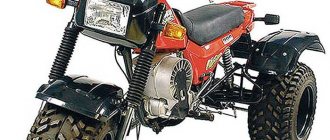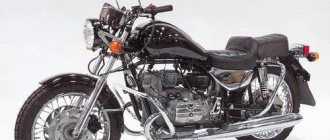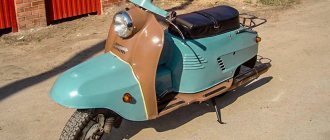This term has other meanings, see Dux.
| Dux | |
| Type | Joint-Stock Company |
| Year of foundation | 1893 |
| Former names | State Aviation Plant No. 1, Machine-Building Plant No. 43, Moscow Machine-Building Plant |
| Founders | Julius (Julius) Aleksandrovich Meller |
| Location | Russia Moscow |
| Key figures | Lieutenant General Yu. P. Klishin (General Director) |
| Industry | mechanical engineering |
| Products | aircraft, aircraft weapons |
| Awards | |
| Website | duks.su |
| Media files on Wikimedia Commons | |
Factory "Dux"
(Dux) - imperial (until 1917) aircraft manufacturing plant in Moscow.
The founder and owner of the plant is engineer Julius (Julius) Aleksandrovich Meller. Founded in 1893. The company produced airplanes, as well as bicycles, motorcycles, handcars, cars, snowmobiles, and airships. After nationalization in 1919, it was renamed State Aviation Plant No. 1
(
GAZ No. 1
).
Story
Before 1918
A native of the Estonian province, Julius Aleksandrovich Meller, who had a good education, came from the city of Weissenstein to Moscow in the late 1880s.
“In the early 1890s, Julius Alexandrovich married the daughter of the Moscow merchant Brezhnev, receiving a huge dowry of 300 thousand rubles at that time. He spent part of this amount in 1893 on the purchase of a small mechanical workshop at 170 Sadovo-Triumfalnaya Street in Moscow, next to the Nikitin Circus. In a stone barn, 10 workers made trapezoids, stepladders, ladders, stands for circus attractions and steam heating pipes.”
[1]
Later, Julius Meller established the assembly of bicycles that were gaining popularity, renaming the enterprise the “ Dux Bicycle Factory” Y. Meller and Co.
" Dux (Dux) translated from Latin means “leader”.
Meller was a member of the Moscow Society of Amateur Cyclists. In Moscow, a branded bicycle store opened in 1895, and in St. Petersburg in 1898[1]. In 1896, Dux bicycles were presented at the All-Russian Art and Industrial Exhibition in Nizhny Novgorod. There were several road, light road and racing models, two three-wheelers, two tandems and a quadruplet. The Moscow cycling magazine Cyclist wrote in a report on the exhibition: “All the bicycles from the Dux factory looked elegant, had a narrow carriage, a frame from the 1896 model and were light in weight.” For his bicycles, Yu. A. Meller received the Bronze medal of the exhibition.
Promotion of 250 rubles. to the bearer of the Joint Stock Company "Dux" Yu. A. Meller with a fixed capital of 350 thousand rubles. Moscow, 1901[2]
One of the first fairly large automobile manufacturers in Russia was the Dux joint-stock company, founded in 1893 by an outstanding designer, production organizer, entrepreneur, motor sportsman and public figure - engineer Julius Aleksandrovich Meller.
In 1900, the company was transformed into the Joint Stock Company “Dux” by Yu. A. Meller
"with an authorized capital of 35 thousand rubles. By this time, the factory employed 115 people and was powered by three 53 hp steam engines. With. each, about 1,000 bicycles were produced annually. At the end of 1900, a fire damaged the factory and in the spring of 1901 Meller decided to buy a place for a new factory in the Tverskaya Yamskaya Sloboda area. By the end of 1901, the renewed enterprise was operational again[3].
Since 1901, the company was located at the address: Moscow, Tverskaya Zastava, 2nd Sushchevsky district (Yamskaya Slobodka district), Chokolov proezd, since 1903 - Verkhniy proezd, since 1907 - 2nd street Yamskoye Pole, since March 3 1934 - st. Pravdy, house no. 8.
In the first years of the 20th century, Dux expanded its product range. At first, he began to build various versions of motorized tires and railway cars. Then he began producing motorcycles and cars. The first Dux car was a batch of steam cars similar to the American Stanley steam engines. For these steam cars in 1902, at a competition in the Mikhailovsky Manege, the company received two first prizes. In parallel with this, Dux began to produce motorcycles with Swiss Moto-Rev (Moto-Dream) engines.[4]
Russia. Aircraft Nieuport-IV (Dux N3). 1912
Dux cars successfully participated in competitions. So, on March 13, 1902, in St. Petersburg, in the Mikhailovsky Manege, a competition was held with the title “For the dexterity of driving a car.” Among the winners was Dame Hilgendorf, who competed in a two-seater steam car, the Dux. The Dux-Locomobile was recognized as the most elegant crew. But still, despite widespread advertising and victories in competitions, steam cars did not find much sales in Russia. The idea of producing steam cars had to be abandoned and the production of gasoline carriages began as they were more popular.
The commercial activities of the enterprise were very successful. It had its own stores in Moscow and St. Petersburg. The main market for Dux cars was St. Petersburg, where the joint-stock company achieved a prominent position and had a luxurious store with a special car showroom. Income in 1904 amounted to 457,350 rubles, including from the sale of bicycles - 213,190 rubles, handcars - 14,000 rubles. and cars - 176,900 rubles. The annual profit amounted to 92,350 rubles. The joint stock company organized its advertising activities well, which made it possible to successfully sell its products.[5]
Meller Julius A., Russia, 1914.
Over the years, the board of the joint-stock company included, in addition to Julius Meller himself, his brother, I.A. Meller, and his wife, A.N. Meller.
After the Russo-Japanese War, the company opened a new direction - aviation. The first aircraft was built in 1909 according to the Farman project - Farman IV [ source not specified 4431 days
]. After eliminating defects and alterations, on August 10, 1910, at the airfield of the Moscow Aeronautics Society (Khodynskoe field), the Farman type airplane No. 1 of the Duks Yu. A. Meller JSC factory, under the leadership of pilot S. I. Utochkin, took off for the first time . In the very first flight on the plane, three records were set: “for duration”, “with a passenger” and “for altitude”. The Dux aircraft immediately became one of the best Russian aircraft of that time. In August 1913, on the Dux-made Nieuport-IV model (“Dux N3”), pilot Staff Captain Pyotr Nikolaevich Nesterov was the first in the world to perform the famous “dead loop,” which was later named after him. The plant also produced aircraft models: Farman VII (1912), Farman XV, Farman XVI (1913), Nieuport-17.
In 1910, according to the design of A. M. Shabsky, a soft airship Yastreb with a volume of 2800 m3 was built (first flight - November 5, 1910), which on August 20, 1912 lifted the crew over Tsarskoe Selo (consisting of: pilot Staff Captain Shabsky, lieutenants Tikhonravov and Kzhichevsky with mechanics) to a height of 1800 meters, setting a world altitude record in the class of light airships. In 1910, Meller became one of the founders and deputy chairman of the Moscow Aeronautics Society (MSA). In 1911 he built his own version of a winter motor sleigh (air sleigh) with an aircraft engine. The first public snowmobile competitions in Moscow took place in January 1912, about which an article was published in the Avtomobilist magazine in 1912.
Since 1912, he switched almost entirely to the production of airplanes. For the production of flight tests of airplanes, the company owned four hangars on the outskirts of Khodynskoye Field.
After the outbreak of the First World War, Yu. A. Meller changed his surname of German origin to his wife’s surname in 1915 and became Brezhnev. Dux produced 22 types of aircraft, including seaplanes. In addition to them, the factory also built airships. Dux was the main supplier of aircraft for the Russian army. During the First World War, 1,569 aircraft and seaplanes were delivered to the Russian Military Department. In 1917, the plant produced up to 60-70 airplanes monthly, becoming one of the largest airplane manufacturers in Russia. In total, in 1910-1917, Dux built more than 1,750 aircraft of various models - this is a third of all those built in Russia at that time. Aircraft were built with and without import licenses, according to proprietary drawings and without them, disassembling a copy of an imported aircraft and drawing up their own drawings using finished parts. In this regard, the plant formed its own drawing and design group, which later became an aviation design bureau. [6]
After the October Revolution of 1917, Julius Meller (Brezhnev) emigrated to France (apparently, together with his wife and son Alexander), there is no information about his further fate. was left to his brother Ivan. Ivan Meller led until his death in April 1918.
Subsequently, the plant, nationalized by decree of the Council of People's Commissars in December 1918, continued to operate, but no longer produced cars.[7]
1918-1941
On February 19, 1919, the plant was renamed State Aviation Plant No. 1
(
GAZ No. 1
). In the 1920s, the aviation activity of the enterprise was actively developing; new buildings were built on the site of hangars on the territory of the Central Airfield along the Leningradskoye Shosse in Moscow (hereinafter referred to as Leningradsky Prospekt).
In 1920-1922, under the leadership of N. N. Polikarpov, the technical department of the plant, based on existing drawings and measurements of parts, prepared documentation for the construction of aircraft in Soviet Russia using imported components and taking into account differences in available materials, equipment and components.
So, in 1921, GAZ No. 1 produced 20 DH.4s with Italian Fiat engines with a capacity of 240 hp. With. At the same time, the first series of DH.9 with 260 hp Daimler engines was laid down. With. The arrival of new equipment made it possible in the same year to increase the number of De Havillands used by the Red Air Fleet to 40-50 units. In 1926, a four-story assembly building was added.
By 1930, a large aircraft building workshop, as well as procurement workshops, had been erected on Khodynskoye Field. By the early 1930s, Plant No. 1 was producing up to 100 aircraft monthly, producing almost all the necessary parts and components, except engines and instruments.
In 1931, it was decided to separate a number of specialized industries from GAZ No. 1: aircraft manufacturing, precision instrument making, radiator manufacturing, wheel manufacturing and bicycle manufacturing.
The organization of bicycle production on the basis of the Duxa machine park gave birth to the Moscow bicycle factory, which worthily accepted and continued the Duxa baton. This enterprise, the 1st Moscow bicycle factory, was built in 1929-1933 near the Kamer-Kollezhsky Val for the production of domestic bicycles and motorcycles. Its brief history: from March 1941 - Moscow Motorcycle, from May 1951 - Plant No. 663 MPSS, (PKB since 1951), post office box 3365, from 1965 - Moscow Instrument, from 1972 - at the Almaz Central Design Bureau, from March 1973 - at the Central Research Institute "Kometa", from 1979 - NPO "Kometa", from 1985 - CNPO "Kometa", now - FSUE "TsNII "Kometa". (Address: 115280 Moscow, Velozavodskaya st., 5).
The plant, which remained in the old Dux buildings, on 2nd Street Yamsky Polya, was divided into two plants in October 1931: No. 31 and No. 32. Plant No. 32 in November 1941 became machine-building plant No. 43, later bearing the name “Kommunar”, and only in post-Soviet times in 1993 (on the centenary of the founding of the enterprise) its original name “Dux” was returned to it.
Before the Great Patriotic War, factories that followed the activities of Dux produced:
- Plant No. 1 - I-15 bis, I-153, BB-22, MiG-3 aircraft;
- Plant No. 39 - aircraft I-1 [ specify
], I-2, I-3, I-15, I-16, R-1, R-5, DB-3, DB-3F.
By the beginning of the Great Patriotic War, the plant remained the only specialized aircraft weapons plant.
The Great Patriotic War
In the fall of 1941, Plant No. 1 was evacuated to the city of Kuibyshev (now Samara), where it remains to this day. On October 8 of the same year it went into operation at a new location. See the main article TsSKB-Progress.
In October 1941, Plant No. 39 was evacuated to Irkutsk, where it remains to this day (JSC Irkut). See the main article Irkutsk Aircraft Plant.
Based on the production facilities of the former aircraft plant No. 1 left in Moscow. Since October 1941, OSOAVIAKHIM has organized an aircraft repair base for the Western Front.
According to the State Defense Committee Decision of December 17, 1941, pilot plant No. 30 from Dubna near Moscow was transferred to the former production site of aircraft plant No. 1, located on Khodynskoye Field. The company was given the task (GKO Decree of January 25, 1942) to master the production of Il-2 attack aircraft as soon as possible. In February 1942, the last MiG-3 fighters, made from the preserved stock of Plant No. 1, were delivered at the M.V. Frunze Central Airfield.
In 1942, aircraft factory No. 381 from Nizhny Tagil was re-evacuated to the territory of the former aircraft plant No. 39, where it, in turn, was evacuated from Leningrad. Since October 1942, the enterprise has mastered the production of La-5 and La-7 fighters.
Plant on Khodynskoe field after 1945
See also: MAPO
At the end of the war, production of Il-2 at plant No. 30 was curtailed. Since 1946, the production of the Il-12 passenger aircraft was mastered here, of which 659 aircraft of all modifications were manufactured before production ceased in 1949.
At plant No. 381, at the end of 1945, production of the La-7 was completed, of which 1,298 were produced at this Moscow plant. Plant No. 381 participates in the production of experimental series of aircraft I-250 (by NKAP order No. 311 of July 27, 1945) and La-150 (by NKAP order No. 331 of August 10/11, 1945, it was prescribed to build an experimental series of five La-150 fighters with Jumo-004 engines). In 1946, in parallel with the I-250 and La-150, the plant made fuselages of two experimental UTI MiG-9 for OKB-155, parts of TR-1 engines for plant No. 45, and at the end of the year - units of the UTB training bomber (all this is not counting civilian products and products for general consumer use).
In 1949, plant No. 381 produced a batch of MiG-15 (75 units).
Due to the need to master the production of the Il-28 tactical bomber and the significant volumes of its production, in 1950, plants No. 30 and No. 381 were united into a single Aviation Plant No. 30. In 1949-1955, at plant No. 30, the production volume of Il-28 reached 100 cars per month. Since that time, the workshops located on the territory of the former plant No. 381 have specialized in the manufacture of the fuselage (large assembly units) and incoming mechanical parts, and the workshops of the “old” plant No. 30 have specialized in the manufacture of airframe system components, parts and final assembly of the product. In 1965, plant No. 30 received the name “Moscow Machine-Building”, in 1973 it was transformed into the Moscow Aviation Production Association (MAPO). Since 1992 - MAPO named after. P. V. Dementieva, since 1995 - MAPO "MiG". Nowadays it is the Production Center named after. P. A. Voronina.
Factory on Pravdy Street after 1951
Since the 1950s, the enterprise, which remained on the historical site of "Duksa" (Pravdy St., d.), has become a specialized serial enterprise for the production of aviation weapons (small arms, cannon weapons, air-to-air missiles). A radical reorganization of the enterprise began. The plant built and equipped an underground shooting range, where the functioning of machine guns and cannons as part of installations with real ammunition was tested. A railway line was brought into the territory. Since 1963, the enterprise began to be called Moscow Machine-Building.
has become a specialized serial enterprise for the production of aviation weapons (small arms, cannon weapons, air-to-air missiles). A radical reorganization of the enterprise began. The plant built and equipped an underground shooting range, where the functioning of machine guns and cannons as part of installations with real ammunition was tested. A railway line was brought into the territory. Since 1963, the enterprise began to be called Moscow Machine-Building.
The serial production of remotely controlled cannon installations DK-12, DK-20, DK-20S for strategic bombers TU-16, TU-22, TU-95 and NUV-1 and USPU-24 installations for Mi-4, Mi- helicopters was mastered. 8, Mi-24. In the 1960s, the production of suspended cannon containers SPPU-6, SPPU-22-01 with remotely controlled mobile weapons for front-line aviation was organized.
Since 1957, production of RS-2US air-to-air missiles began, and since 1960, R-3S missiles. Further, the plant mastered the production of R-3R, R-13M, R-60 and R-73 missiles. For each type of missile, the enterprise organized the production of an aircraft launcher suspended under the wing or fuselage of a combat aircraft.
In 1970-1980, monthly production volumes of several types of missiles reached 1000 units. At the same time, various aircraft units were produced, the range of which amounted to more than a hundred items. In addition, the company produced tens of thousands of various models of Chaika vacuum cleaners. The plant was assigned the status of the industry's leading enterprise for the serial production of short-range and close-in maneuverable air-to-air missiles, aircraft launchers and small arms installations for aircraft and helicopters.
In 1993, the plant returned its historical name “Dux”.
Currently
The main products of Dux JSC are the R-73, R-73E (export version) short-range air-to-air missiles and their launchers.
Start of production of small motorcycles
On the basis of this particular production, in execution of the resolution of the Economic Council under the Council of People's Commissars of the USSR dated May 9, 139, number 428 “On the organization of production of small-displacement motorcycles,” signed by A.I. Mikoyan, on July 7 of the same year, an order was signed to create a motorcycle plant in the city of Serpukhov. As part of the organization of production, a design department was created at the plant, headed by V.I. Latyshev. The first problem he was assigned to solve was improving the design of the MLZ motorcycle.
In addition to the production of motorcycles, the plant was ordered to master the production of spare parts for motorcycles, training cut-out engines and consumer goods. In 1940, the Serpukhov Motorcycle Plant produced the first pilot batch of MLZ motorcycles. At the end of the same year, specialists from the Leningrad Motorcycle Plant transferred drawings of the L-8 motorcycle to Serpukhov and in June 1941, 180 motorcycles of this model rolled off the SMZ assembly line.
motorcycle L-8
Like all large enterprises, with the advance of Nazi troops, the plant was evacuated to the east in October 1941. The company resumed production after the victory of Soviet troops near Moscow: repairs of captured motorcycles were organized at its facilities. The plant’s specialists also mastered the assembly of Indian and Harley motorcycles made in the USA with sidecars for the M-72 motorcycle manufactured in Irbit. And from 1944 to 1946, SMZ produced spare parts for another AM-600 motorcycle.
SMZ logo
In 1946, the Serpukhov Motorcycle Plant was subordinated to the Central Motorcycle Design Bureau as an experimental workshop. Here, until 1951, the production of experimental engines for various types of Soviet motorcycles was established.
In 1951, SMZ began production of the S1L motorcycle stroller, which was intended to provide vehicles for disabled people during the Great Patriotic War. The sidecar was designed by engineers from the Central Design Bureau for motorcycle manufacturing. And in 1954 - 1957, together with them, the company created and launched into production a new SZL motorized stroller.
The plant further specialized in the development and production of motorized wheelchairs. In the period from 1957 to 1959, the plant developed and launched into production the SZA and S3B motorcycle sidecars; in 1970, the S3D with heating and an all-metal body went into production, which is still produced today.
S1L
S3L
The plant’s specialists, who have proven their high production level, participated together with the design teams of AZLK, ZIL and NAMI in the development of the experimental Sputnik vehicle.
The plant also produced bicycles: the “Moth” for children, the “Krokha” and the “Hummingbird” for teenagers.
However, due to the increase in the level of well-being of the population, the need for motorcycles and sidecars has decreased significantly, and the need for cars has increased. In this regard, the Serpukhov plant was repurposed to produce cars.
Notes
- ↑ 12
Meller Julius (Julius) Alexandrovich. - Scripophily.ru Antique securities
- JSC "DUKS" - History
- DUX (undefined)
(inaccessible link). glossary.greytek.ru. Retrieved October 23, 2015. Archived October 24, 2014. - Moskovsky is a car manufacturer in Tsarist Russia. Russian history. Pre-revolutionary Russia. (undefined)
. statehistory.ru. Access date: October 23, 2015. - Aviation plant Dux Yuri Meller and production of bicycles and cars | Red Falcons of our Motherland
- Dux - Large automobile dictionary (undefined)
. cnru123.com. Access date: October 23, 2015.










